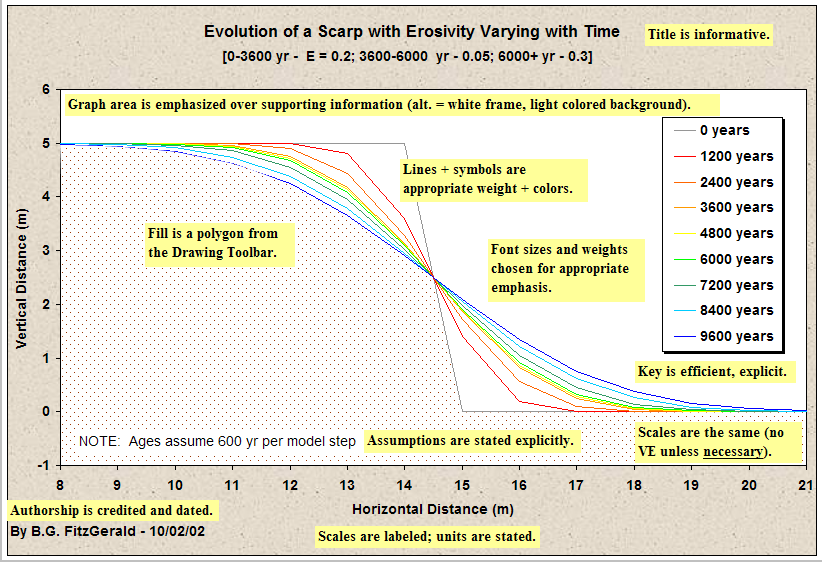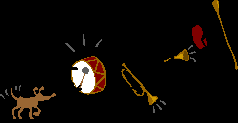THERE WAS A N ACCIDENT IN THE CORNER AN
A) IS THERE ARE THEREALZHEIMER’SDEMENTIA RESOURCES FOR FAMILIES THERE ARE MANY
THERE IS SIGNIFICA “HAY” PARA SINGULARES
1 ARE THERE ANY RESTRICTIONS ON THE RIGHTS OF
1 HALLENTRANCEWAY FINDING THERE IS PARTICULARLY CLEAR SIGNAGE TO
1 IF THERE’S A PERFORMANCE HAPPENING YOU’LL BE IN
- TITULOS PRINCIPALES - PAGINA DE PRUEBA (PRIMER RENGLÓN)




|
There
|
was
|
a an excellent cafeteria downstairs a birthday party tonight |
|
were
|
m three bedrooms in my house some flowers in the garden |
“There was” significa: hubo o había (en singular) There was a birthday party last night
Había una fiesta de cumpleaños anoche.
“There were” significa: hubo o había (en plural) There were many students at Cibercolegio
Hubo muchos estudiantes en el Cibercolegio.
Este verbo “haber” no se debe traducir por separado “There + was” ó “There + were”, pues consta de un adverbio de lugar “There: allá” y el verbo to be “was, were”, por lo tanto, su traducción literal sería errónea.
Para utilizar correctamente estos verbos, se debe tener en cuenta el número del sustantivo (plural o singular), cuando se trata de sustantivos en singular, se debe utilizar There was. Cuando se utilizan sustantivos en plural, se utiliza There were.
Por tratarse de un verbo que consta de to be (was - were), las oraciones negativas e interrogativas siguen el mismo orden utilizado con to be, así:
|
WAS THERE a telephone in your house? |
WERE THERE plants in your bedroom? |
|
Yes, there was a telephone in my house |
Yes, there were plants in my bedroom |
|
No, there wasn’t a telephone in my house |
No, there weren’t plants in my bedroom |
Toda pregunta, entonces, se debe comenzar con was / were there, y en la respuesta se comienza con there was / were, o, there wasn’t / weren’t.
THERE WAS se emplea con sustantivos no contables, es decir, aquellos que generalmente no se pluralizan:
El agua (water), el aceite (oil), la arena (sand), por este motivo decimos: hay arena / aceite, agua. . . en singular, nunca decimos: hay muchas aguas, arenas…
THERE WERE se emplea con sustantivos contables, es decir, aquellos que se pueden o suelen pluralizar:
Computadores (computers), libros (books), clases (classes), etc.
|
There was |
a nice show on TV this week |
|
|
Hubo un agradable espectáculo en la televisión esta semana. |
|
There was |
some milk in the refrigerator |
|
|
|
|
There were |
many people in the street |
|
|
|
|
There was |
a big dog in the garden |
|
|
|
|
There were |
many large factories in Medellín |
|
|
|
|
There were |
beautiful places to visit in Colombia |
|
|
|
|
There was |
a good concert on Friday |
|
|
|
|
There was |
a bicycle in the garage |
|
|
|
|
There were |
two pictures in the dining room |
|
|
|
C ibercolegio
UCN. Cra 21 # 34b-07. Santa Rosa de Osos. Ant. Col.
ibercolegio
UCN. Cra 21 # 34b-07. Santa Rosa de Osos. Ant. Col.
www.cibercolegioucn.edu.co – e-mail: [email protected]
1 SECTION 3112 UNIFORM ALLOWANCE (A) POLICE DEPARTMENT THERE
1 THE PARTICLES AND THEIR PROPERTIES THERE ARE TWO
1 WELCOME THERE IS A GREAT SIGNIFICANCE OF THE
Tags: accident in, corner, accident, there
- POR EURICO PAZ COSTA E COLABORAÇÃO DE C &
- GROUP 1 FRAME1 RECTANGLE 3 LESSON 4 THE
- IMPLEMENTATION OF THE RECOMMENDATIONS ADOPTED BY THE NINTH MEETING
- EAPS08 SISTEMA D’INFORMACIÓ MANUAL D’USUARI VERSIÓ 10 EAPS08
- Pályázatot Kiíró Kollégium Megnevezése Ismeretterjesztés és Környezetkultúra az nka
- PRILOGA 2 VZOREC POGODBE SLOVENSKA TURISTIČNA ORGANIZACIJA DIMIČEVA
- ZAŁĄCZNIK NR 3 WYKAZ DRZEW PRZEZNACZONYCH DO USUNIĘCIA Z
- University of Miskolc Faculty of Economics Institute of World
- TITLE OF THE RESEARCH PROJECT COMPARING SPATIAL PATTERN OF
- 6 Külképviselet kir Szám Jegyzőkönyv Házassági Szándék Bejelentéséről Anyakönyvi
- TORRENT DE L’OLLA 7 (JULIOL 06) ACTUALITAT REFORÇOS ESTIUENCS
- REPUBLIKA HRVATSKA DRŽAVNI ZAVOD ZA STATISTIKU UPUTE
- Spring 2012 Final Exam Schedule This Schedule is for
- MEMORIA POLÍTICA PARA PRESENTARNOS A LAS ELECCIONES MUNICIPALES (VÉASE
- ANTONIO MORENO BELLÓN ORIENTADOR EDUCATIVO NOAM CHOMSKY 1 QUIÉN
- OBRAZAC PRORAČUNA PROGRAMA PROJEKTA ILI MANIFESTACIJE ZA PRIJAVU
- Jenna Gatzke Spring 2017 Food for Thought It’s Time
- LA GACETA 204 – MIÉRCOLES 25 DE OCTUBRE DEL
- SURAT KETERANGAN NOMOR ……… UN7523 ……
- 挪威企业简介 一、阿克集团公司 3 二、挪威管理学院 3 三、DNB NOR银行 4 四、挪威出口融资公司
- PYT GRZEGORZ (23 MAJA 2002) CZY W NOWYM TESTAMENCIE
- NEW PATIENT RECORD PLEASE FILL IN ALL AREAS OR
- ZAŁĄCZNIK NR 4 DO REGULAMINU USTALANIA WYSOKOŚCI PRZYZNAWANIA I
- B14 (CHILD YOUTH AND FAMILY SERVICES) MINISTER OF SOCIAL
- phy 106 Homework 1 Name January 14
- DATOS QUE DEBEN APARECER EN EL ENVASE PRIMARIO
- FENOMENA HURUF MUQATHA’AH DALAM ALQUR’AN SEBUAH PERSPEKTIF SOSIOLINGUISTIK
- !doctype Htmlhtml Langenheadmeta Charsetutf8meta Contentieedgemeta Nameviewport Heightdeviceheight
- C FELIPE CHECA 23 06071 BADAJOZ TLF 924 212
- APVNWCCGVC STEWARDSHIP SEMINAR DATE & VENUE AUGUST 2334 2007
 PLAN ESCOLAR DE EMERGENCIA COLEGIO NUEVO GIMNASIO COLEGIO NUEVO
PLAN ESCOLAR DE EMERGENCIA COLEGIO NUEVO GIMNASIO COLEGIO NUEVO VENTANA RESEARCH – BI AND BPM BUSINESS INTELLIGENCE MEETS
VENTANA RESEARCH – BI AND BPM BUSINESS INTELLIGENCE MEETSPOUŽITÍ FORMULÁŘE NENÍ POVINNÉ ŽÁDOST O POSKYTNUTÍ INFORMACE (DLE
MWA MENTAL HEALTH PROJECT MARCH 2010 APRIL 2012 MWA
 ESTADÍSTICOS PROFESORES 2000 1 2 3
ESTADÍSTICOS PROFESORES 2000 1 2 3  3 FACTORS AFFECTING HUMAN HEALTH STUDY SESSION 3 FACTORS
3 FACTORS AFFECTING HUMAN HEALTH STUDY SESSION 3 FACTORS CENTRES D’ACOLLIDA D’ANIMALS DE COMPANYIA CAAD CENTRE D’ACOLLIDA
CENTRES D’ACOLLIDA D’ANIMALS DE COMPANYIA CAAD CENTRE D’ACOLLIDAHEUTE MORGEN IN DER SBAHN HATTE ICH EIN DEJAVU
SZERSZA INFORMACJA NAUKOWA – STANISŁAW BIELEŃ W RAMACH AKTYWNOŚCI
1 IDENTIFICACIÓN DE LA ASIGNATURA NOMBRE CONSECUENCIAS HIDROLÓGICAS Y
 INSTRUCTOR’S NOTES FOR SCARP SPREADSHEET EXERCISE THIS ACTIVITY IS
INSTRUCTOR’S NOTES FOR SCARP SPREADSHEET EXERCISE THIS ACTIVITY ISBUPATI BANTUL PERATURAN BUPATI BANTUL NOMOR 17 TAHUN 2005
 OBČINA VRANSKO ODBOR ZA KMETIJSTVO VRANSKO 59 3305
OBČINA VRANSKO ODBOR ZA KMETIJSTVO VRANSKO 59 3305OFERTA STUDIÓW PODYPLOMOWYCH NA WYDZIALE BEZPIECZEŃSTWA WEWNĘTRZNEGO NA ROK
 STSGAC1040ADD3CORR2 NACIONES UNIDAS STSGAC1040ADD3CORR2 SECRETARÍA DISTR GENERAL 31 DE
STSGAC1040ADD3CORR2 NACIONES UNIDAS STSGAC1040ADD3CORR2 SECRETARÍA DISTR GENERAL 31 DETWEEDE KAMER DER STATENGENERAAL 2 VERGADERJAAR 20102011 32 549
AF HELLE DREIER ERGOTERAPEUT PÅ HJÆLPEMIDDELCENTRALEN VESTSJÆLLANDS AMT TRYKSÅR
 PHARE DE L’ILE NOIRE CORRIGÉ 1ETUDE GÉNÉRALE
PHARE DE L’ILE NOIRE CORRIGÉ 1ETUDE GÉNÉRALE PB MTG 7 REGULAR MEETING 7 DATE OCTOBER 8
CERERE CATRE DIRECTIA DE SANATATE PUBLICA TIMIS SUBSEMNATULA MEDIC
 n
accident in the corner
n
accident in the corner any
students at Cibercolegio
any
students at Cibercolegio